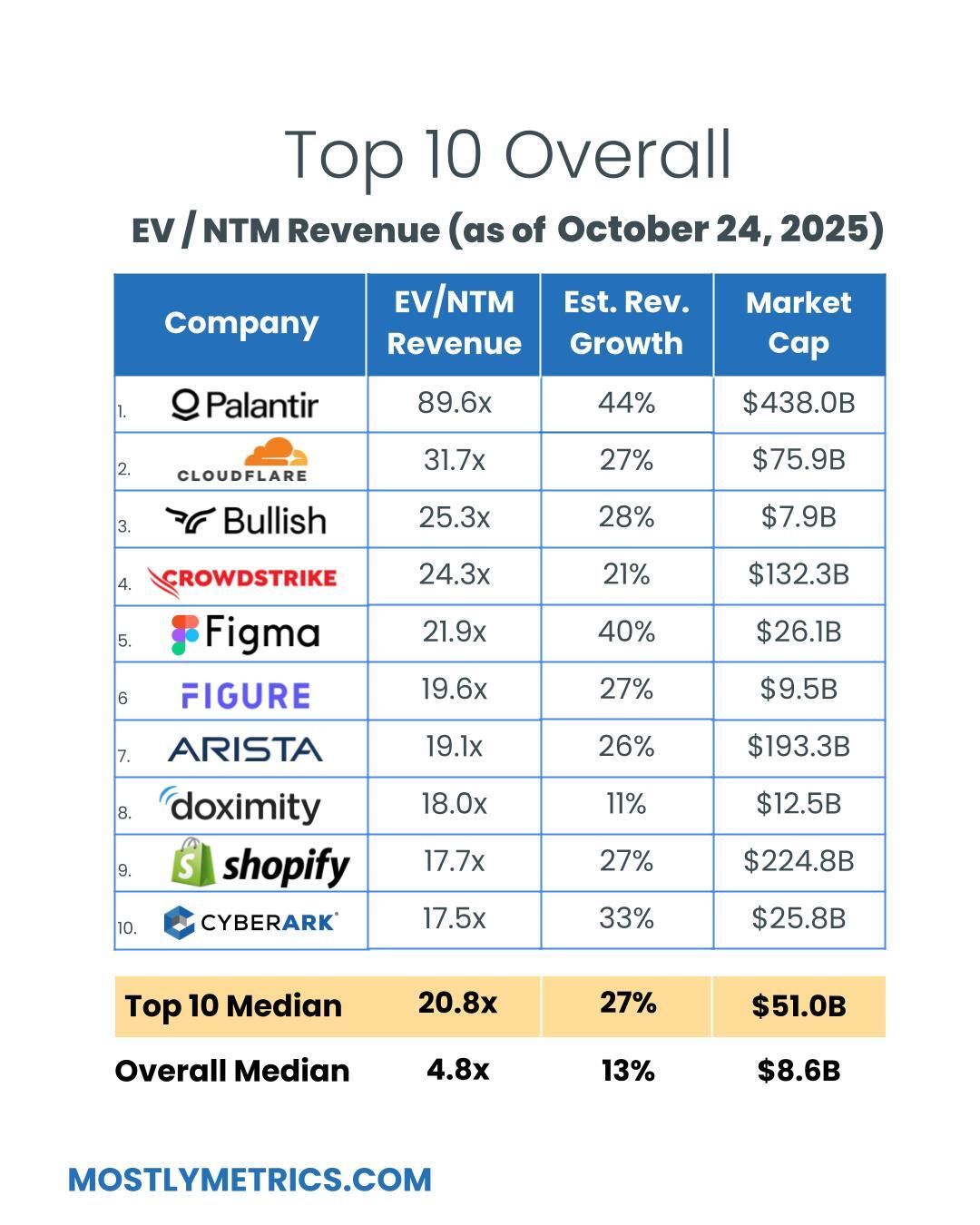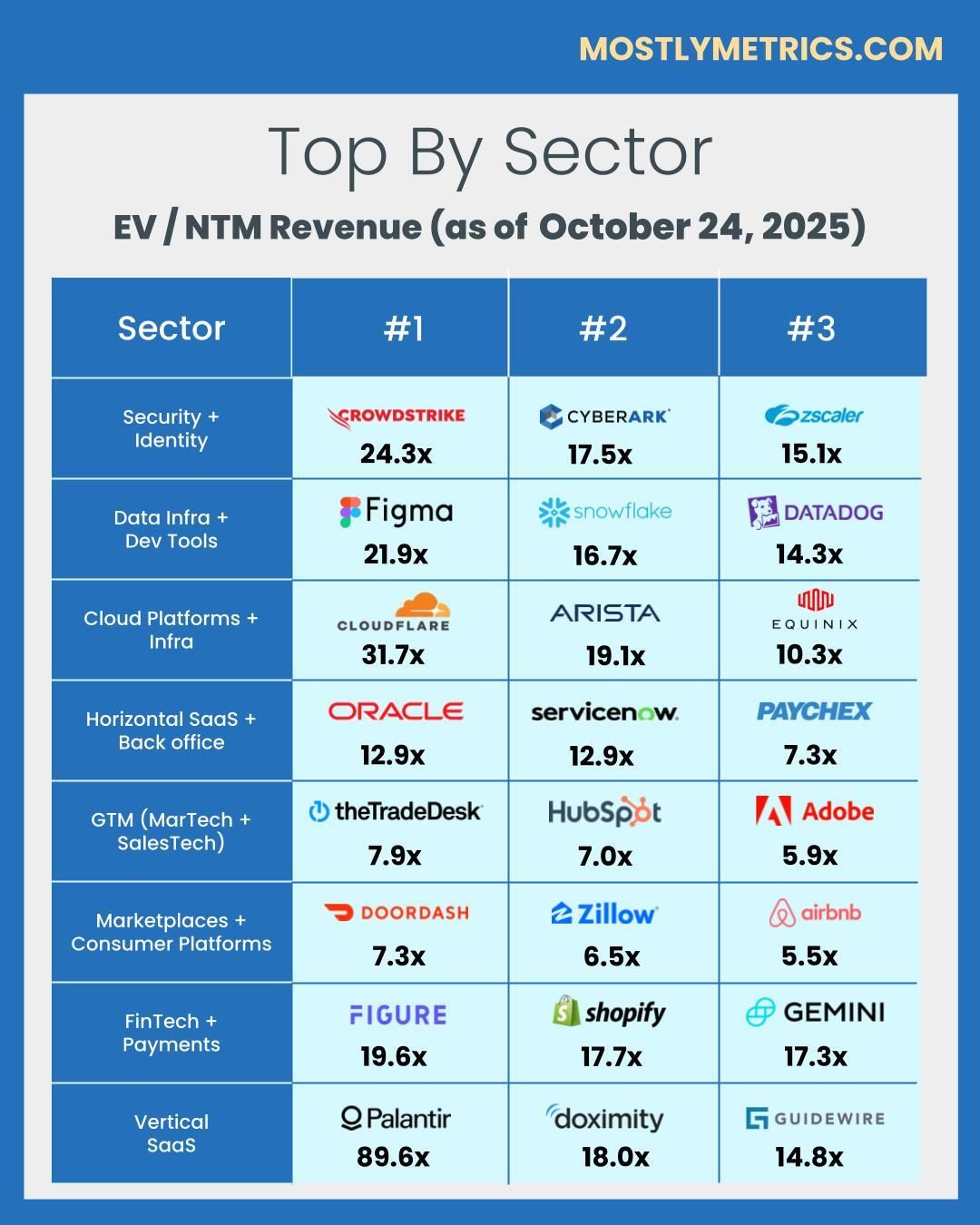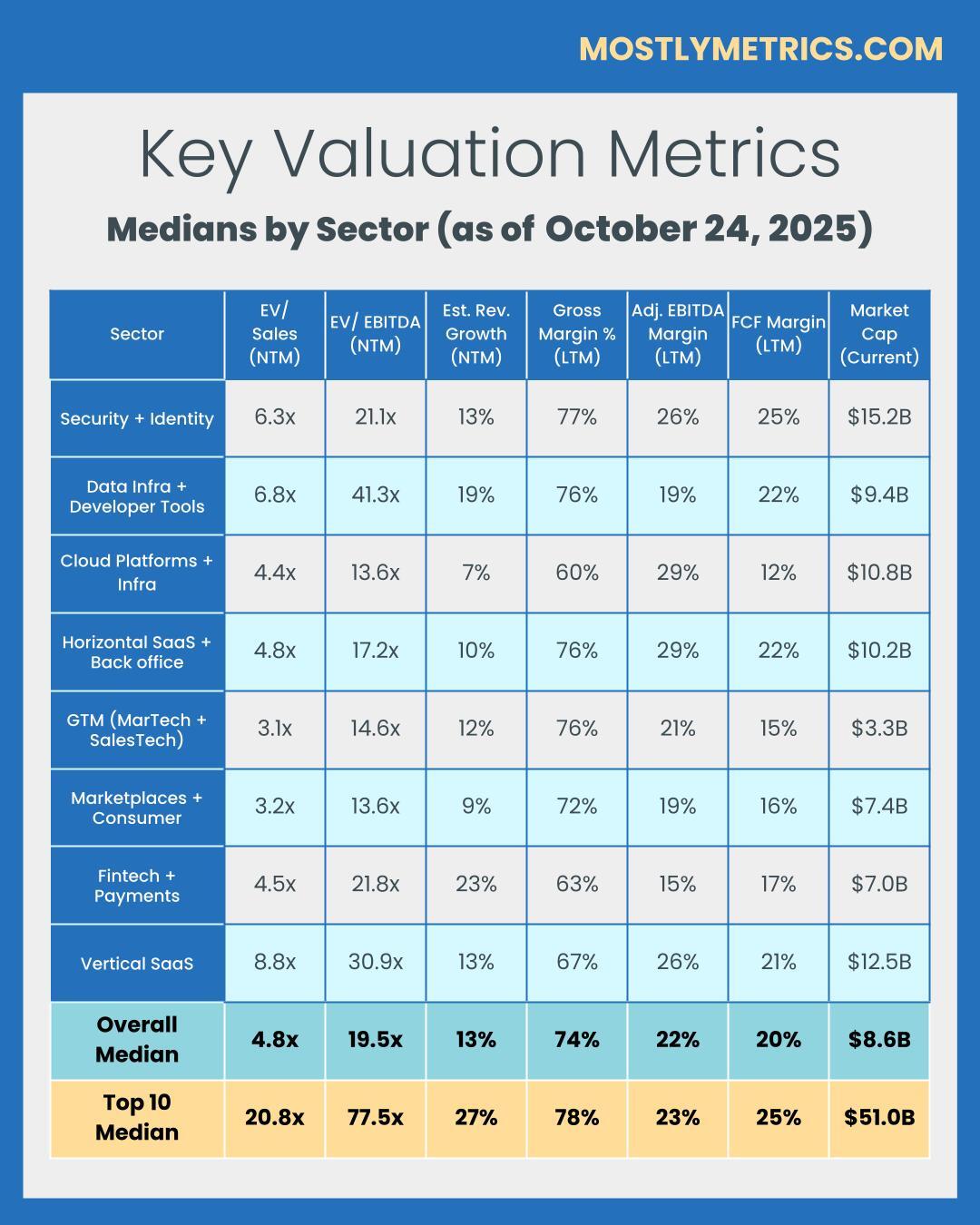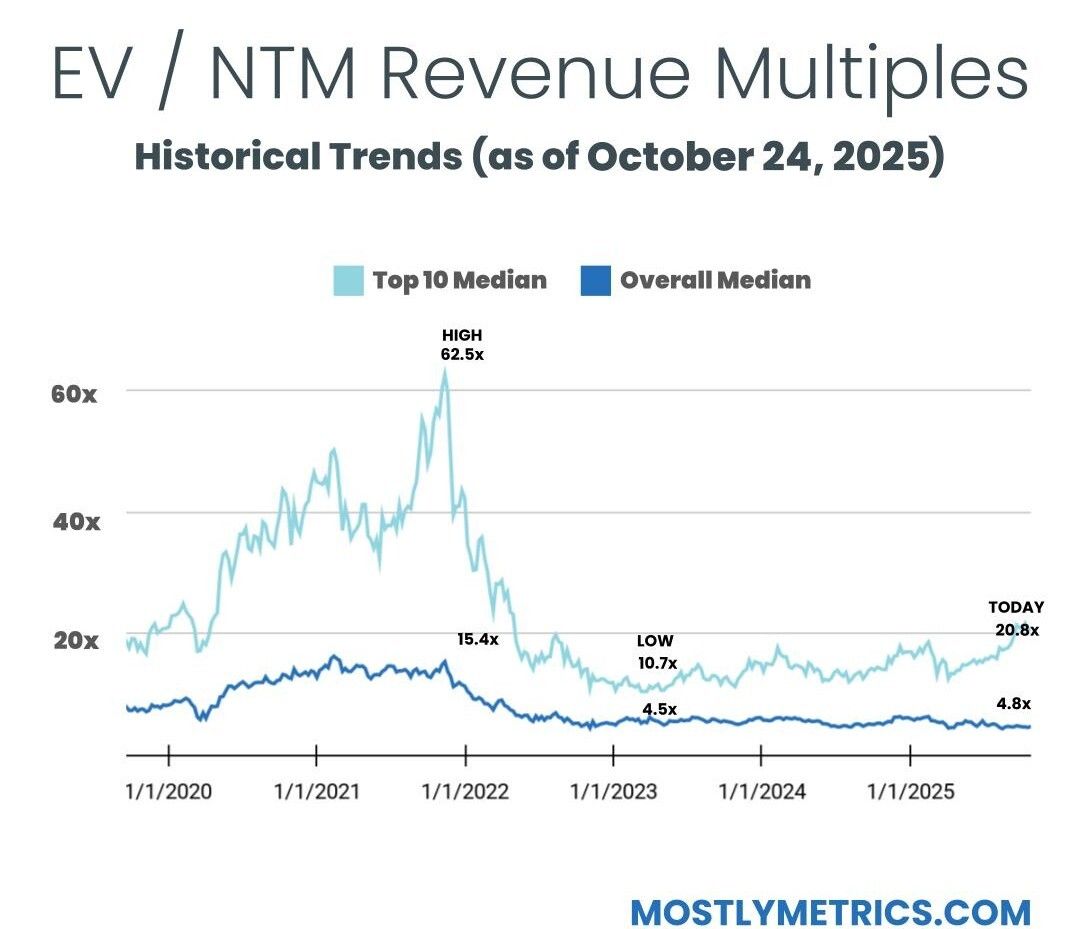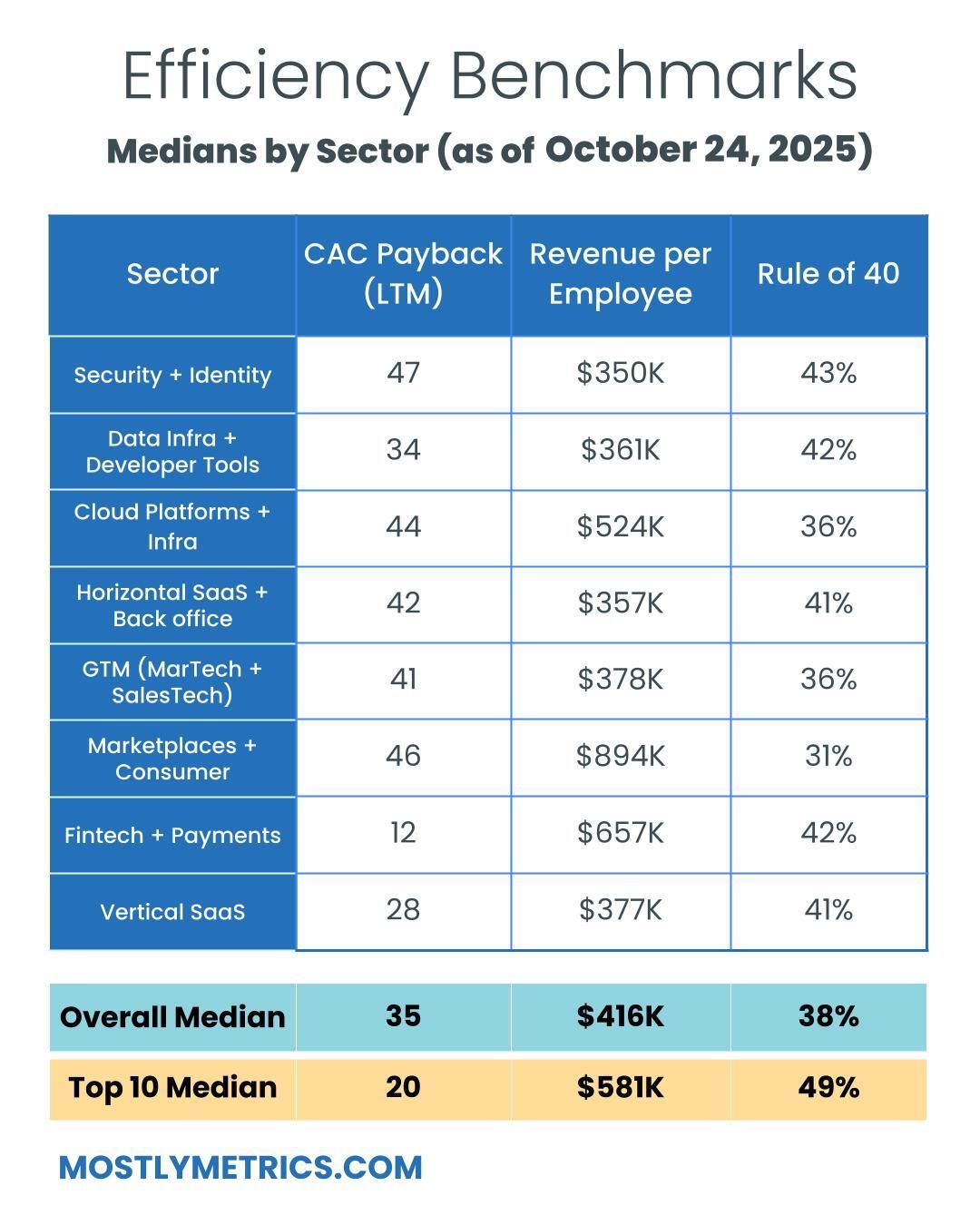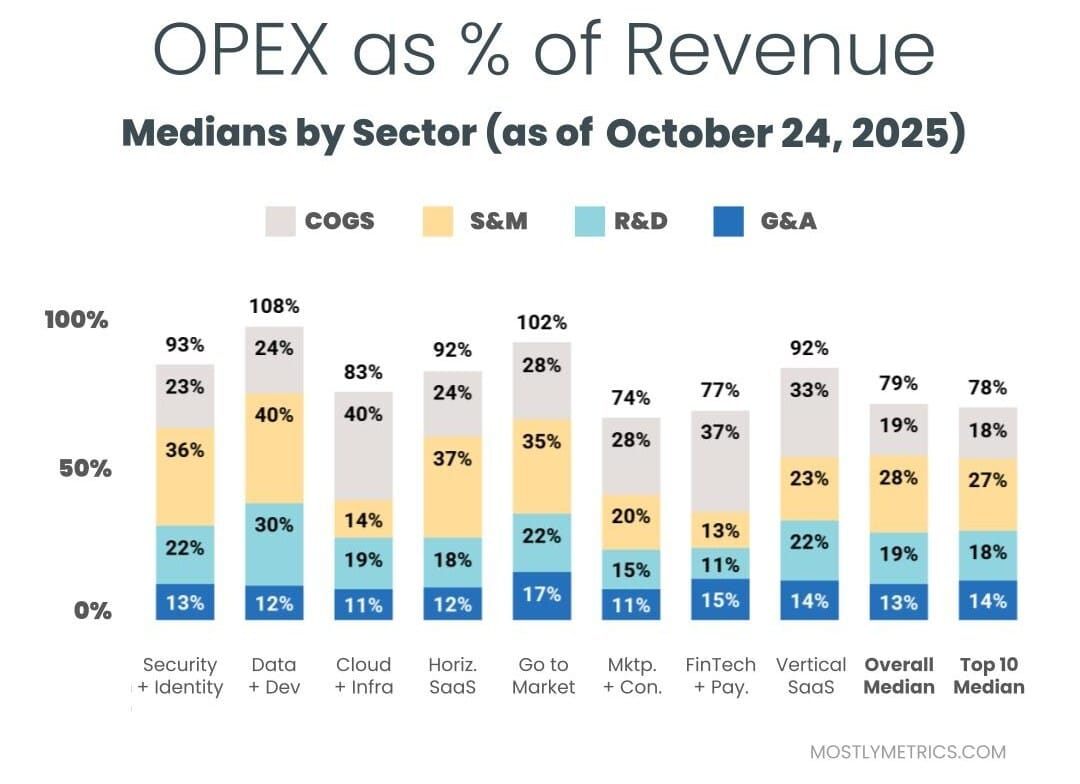I talk to a lot of CFOs, and one thing we all have in common - we love real paper. I’m a sticky note guy. In a world gone digital, I’m still scribbling notes and to-dos like it’s 1999.
But one thing we all hate? Managing reimbursements that live on sticky notes, screenshots, or Slack threads. Even the “Did you get my receipt?” messages feel like chewing glass.
That’s why I like what Mercury’s doing. They believe business banking should do more… like making reimbursements actually tolerable. Their free expense reimbursement template lets your team track, submit, and approve expenses without the back-and-forth.
In a few minutes, your crew can log mileage, categorize receipts, and generate a clean PDF ready for approval. No login. No commitment. Just a smarter way to handle what used to be a spreadsheet mess.
*Mercury is a financial technology company, not a bank. Banking services provided through Choice Financial Group, Column N.A., and Evolve Bank & Trust; Members FDIC.
Calling all FP&A Managers and Directors!!!
We are actively trying to fill positions for three top SaaS companies looking for FP&A Managers and Directors.
If you’re a finance brainiac who’s passively open to new opportunities and wants to be kept in a warm pool of talent CLICK HERE
Who we place:
We specialize in three levels: Manager, Director, and VP.
And we focus on two core areas: FP&A and Accounting.
It’s all confidential match making. We’ll just float opps your way from time to time. Up to you if you take the call.
(Note: We work with a select few tech companies to fill high profile FP&A and Controller roles… if you are a top SaaS company looking to find talent amongst our readers, click here)
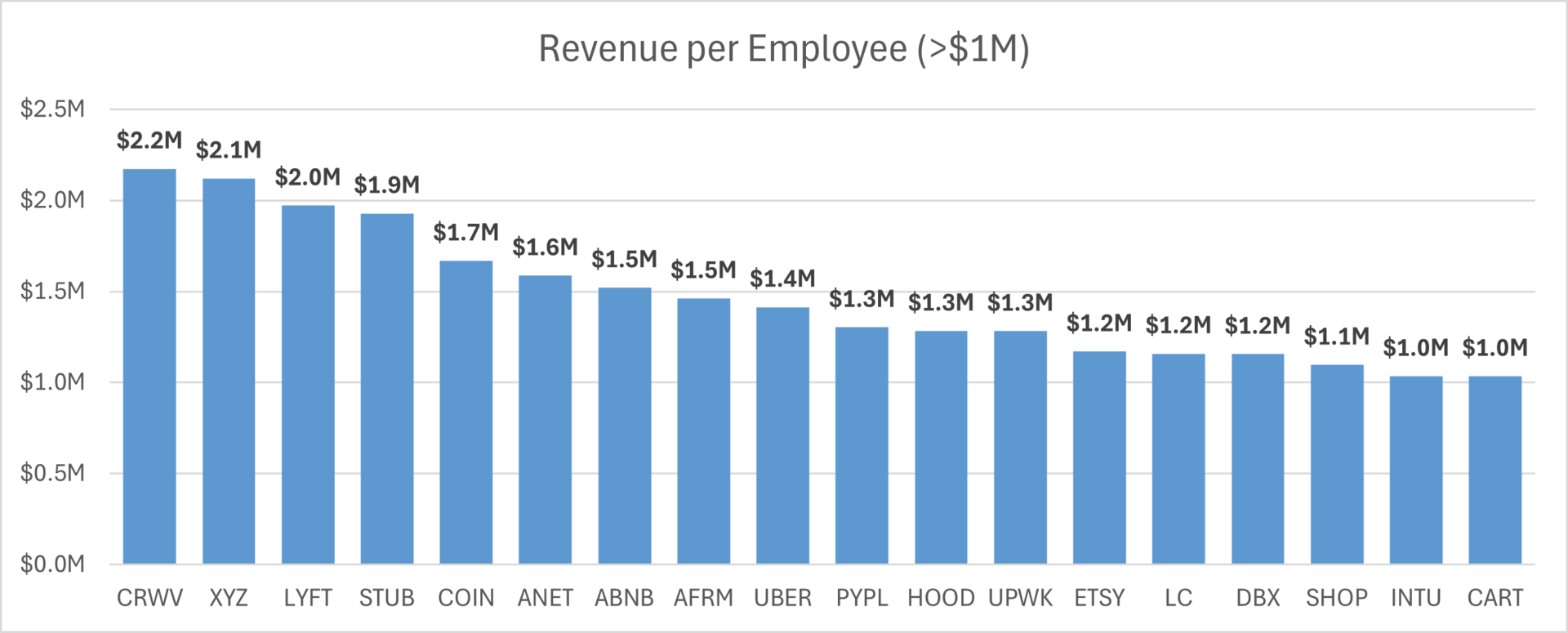
Data source: Koyfin
I’ve long said that Revenue per Employee is the GOAT of SaaS metrics. With ~70% of costs walking on two legs, revenue per employee is the most honest metric in the world.
Revenue per employee is an underused metric that probably offers the best insight into a company's scalability, or eventual operating efficiency. As your company grows it should demonstrate operational leverage - that means the ability to do more with less.
Yes, you can accept a few plateaus, and maybe even one or two dips along the way, but you don’t want to get stuck in a trough for a prolonged period of time.
The rule of thumb is you want to be close to $400K per employee at IPO. If we look at the 146 companies we track on a weekly basis, the median company is doing $416K, and the top ten comes in at $581K.
This week I decided to break out the top and bottom decile companies, picking off the companies north of $1M and those below $275K.
Perhaps surprisingly, CRWV is leading the way, with an astonishing $2.2M per employee. The company is not close to profitable or free cash flow positive, as they are making massive infrastructure investments. But they are truly the case of “a lot of revenue cures a lot of sins.” They simply can’t grow (hire) the denominator fast enough to keep up with their meteoric revenue growth.
But their infra heavy business model is the exception, not the norm. The majority of the leaders are marketplaces (ABNB, STUB, UBER, UPWK, ETSY, CART) and fintechs (XYZ, COIN, AFRM, PYPL, SHOP). Infra, Security, and enterprise SaaS companies were few and far between when parsing out the top performers.
OpenDoor technically generates $3.5M per employee. But their gross profit margin is only 8%. They are more like a marketplace that holds inventory
You could say something similar for NEGG, who shows $1.6M per employee but only has 11% to run the rest of their business.
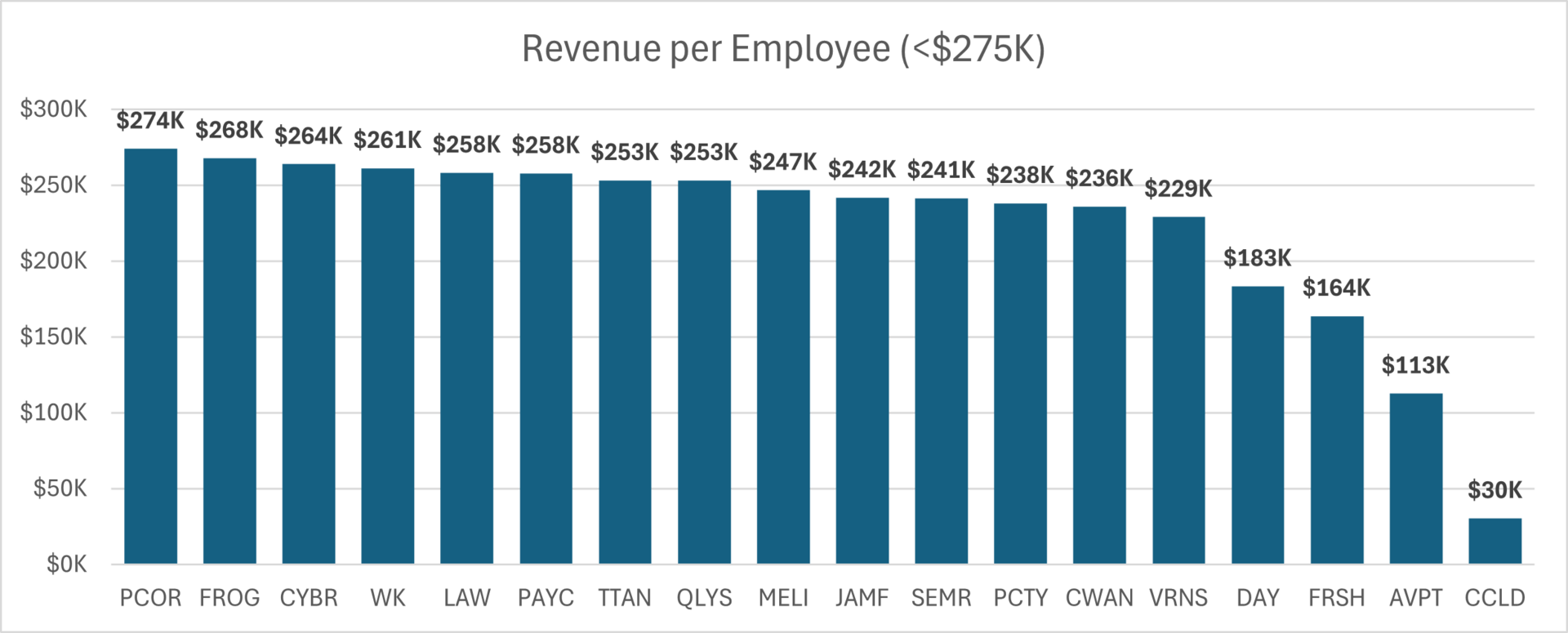
Data source: Koyfin
The laggards are full of predominantly field sales software companies: FROG, TTAN, JAMF, DAY. And at the bottom of the barrel is CareCloud, who’s holding onto dear life with +3,500 employees and $110M in revenue.
My Take After Staring At This Data Over Three Dunkin Iced
Revenue per employee is hard to fake. Your revenue is what it is. Your employee count is what it is. The ratio tells the truth.
We have seen a few companies game this ratio in the past with an over reliance on contractors (hello, Expensify), but eventually physics and the stock market catch up with you.
I know it’s not perfect, but it’s honest. And in a world full of hand-wavy narratives and adjusted EBITDA dark arts, I’ll take honest any day.
Even if you aren’t focused on your comp set’s relative performance against this metric, you should still be maniacally focused on your own company’s progress. You can’t let the game get away from you.
Because as philosopher Rasheed Wallace would say:

TL;DR: Multiples are UP week over week.
Top 10 Medians:
EV / NTM Revenue = 20.8x (UP 0.2x w/w)
CAC Payback = 20 months
Rule of 40 = 49%
Revenue per Employee = $581k
Figures for each index are measured at the Median
Median and Top 10 Median are measured across the entire data set, where n = 146
Recent changes
Added: Bullish, Figure, Gemini, Stubhub, Klarna
Removed: Olo, Couchbase
Population Sizes:
Security & Identity = 17
Data Infrastructure & Dev Tools = 13
Cloud Platforms & Infra = 15
Horizontal SaaS & Back office = 19
GTM (MarTech & SalesTech) = 19
Marketplaces & Consumer Platforms = 18
FinTech & Payments = 28
Vertical SaaS = 17
Revenue Multiples
Revenue multiples are a shortcut to compare valuations across the technology landscape, where companies may not yet be profitable. The most standard timeframe for revenue multiple comparison is on a “Next Twelve Months” (NTM Revenue) basis.
NTM is a generous cut, as it gives a company “credit” for a full “rolling” future year. It also puts all companies on equal footing, regardless of their fiscal year end and quarterly seasonality.
However, not all technology sectors or monetization strategies receive the same “credit” on their forward revenue, which operators should be aware of when they create comp sets for their own companies. That is why I break them out as separate “indexes”.
Reasons may include:
Recurring mix of revenue
Stickiness of revenue
Average contract size
Cost of revenue delivery
Criticality of solution
Total Addressable Market potential
From a macro perspective, multiples trend higher in low interest environments, and vice versa.
Multiples shown are calculated by taking the Enterprise Value / NTM revenue.
Enterprise Value is calculated as: Market Capitalization + Total Debt - Cash
Market Cap fluctuates with share price day to day, while Total Debt and Cash are taken from the most recent quarterly financial statements available. That’s why we share this report each week - to keep up with changes in the stock market, and to update for quarterly earnings reports when they drop.
Historically, a 10x NTM Revenue multiple has been viewed as a “premium” valuation reserved for the best of the best companies.
Efficiency
Companies that can do more with less tend to earn higher valuations.
Three of the most common and consistently publicly available metrics to measure efficiency include:
CAC Payback Period: How many months does it take to recoup the cost of acquiring a customer?
CAC Payback Period is measured as Sales and Marketing costs divided by Revenue Additions, and adjusted by Gross Margin.
Here’s how I do it:
Sales and Marketing costs are measured on a TTM basis, but lagged by one quarter (so you skip a quarter, then sum the trailing four quarters of costs). This timeframe smooths for seasonality and recognizes the lead time required to generate pipeline.
Revenue is measured as the year-on-year change in the most recent quarter’s sales (so for Q2 of 2024 you’d subtract out Q2 of 2023’s revenue to get the increase), and then multiplied by four to arrive at an annualized revenue increase (e.g., ARR Additions).
Gross margin is taken as a % from the most recent quarter (e.g., 82%) to represent the current cost to serve a customer
Revenue per Employee: On a per head basis, how much in sales does the company generate each year? The rule of thumb is public companies should be doing north of $450k per employee at scale. This is simple division. And I believe it cuts through all the noise - there’s nowhere to hide.
Revenue per Employee is calculated as: (TTM Revenue / Total Current Employees)
Rule of 40: How does a company balance topline growth with bottom line efficiency? It’s the sum of the company’s revenue growth rate and EBITDA Margin. Netting the two should get you above 40 to pass the test.
Rule of 40 is calculated as: TTM Revenue Growth % + TTM Adjusted EBITDA Margin %
A few other notes on efficiency metrics:
Net Dollar Retention is another great measure of efficiency, but many companies have stopped quoting it as an exact number, choosing instead to disclose if it’s above or below a threshold once a year. It’s also uncommon for some types of companies, like marketplaces, to report it at all.
Most public companies don’t report net new ARR, and not all revenue is “recurring”, so I’m doing my best to approximate using changes in reported GAAP revenue. I admit this is a “stricter” view, as it is measuring change in net revenue.
OPEX
Decreasing your OPEX relative to revenue demonstrates Operating Leverage, and leaves more dollars to drop to the bottom line, as companies strive to achieve +25% profitability at scale.
The most common buckets companies put their operating costs into are:
Cost of Goods Sold: Customer Support employees, infrastructure to host your business in the cloud, API tolls, and banking fees if you are a FinTech.
Sales & Marketing: Sales and Marketing employees, advertising spend, demand gen spend, events, conferences, tools.
Research & Development: Product and Engineering employees, development expenses, tools.
General & Administrative: Finance, HR, and IT employees… and everything else. Or as I like to call myself “Strategic Backoffice Overhead.”
All of these are taken on a Gaap basis and therefore INCLUDE stock based comp, a non cash expense.
Please check out our data partner, Koyfin. It’s dope.
Wishing you a forecast you can beat, and raise,
CJ

